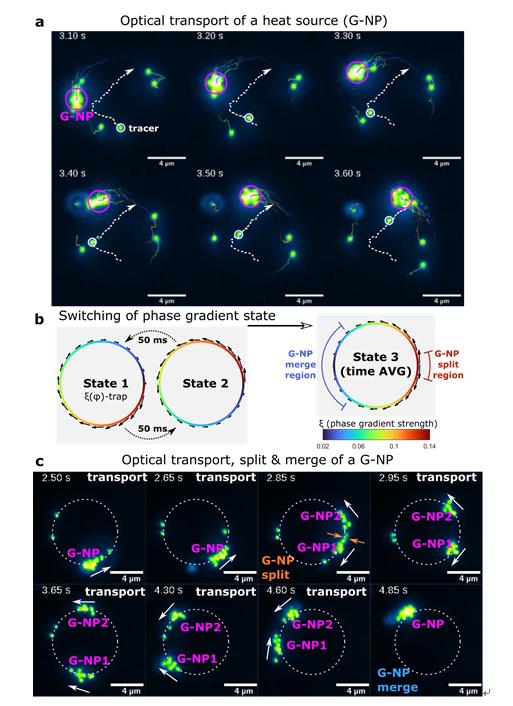
Credit: by José A. Rodrigo, Mercedes Angulo and Tatiana Alieva
Today, optofluidics is one of the most representative application of photonics for biological/chemical analysis. The ability of plasmonic structures (e.g., colloidal gold and silver nanoparticles, NPs) under illumination to release heat and induce fluid convection at the micro-scale has attracted high interest over the past two decades. Their size- and shape-dependent as well as wavelength-tunable optical and thermal properties have paved the way for relevant applications such as photothermal therapy/imaging, material processing, biosensing and thermal optofluidics to name a few. In-situ formation and motion control of plasmon-enhanced heat sources could pave a way for further harnessing their functionalities, especially in optofluidics. However, this is a challenging multidisciplinary problem combining optics, thermodynamics and hydrodynamics.
In a recent paper published in Light Science & Application, Professor Jose A. Rodrigo and co-workers from Complutense University of Madrid, Faculty of Physics, Department of Optics, Spain, have developed a technique for jointly controlling the formation and motion of heat sources (group of gold NPs) as well as of the associated thermal-induced fluid flows created around them. The scientists summarize the operational principle of their technique:
“The technique applies a structured laser-beam trap to exert an optical propulsion force over the plasmonic NPs for their motion control, while the same laser simultaneously heats up them. Since both the shape of the laser trap and the optical propulsion forces are easily and independently tailored, the hot NPs can be optically transported along reconfigurable routes with controlled speed according to the standing application.”
They underline the main achievement:
“Based on this remote light-driven manipulation mechanism, we report the first evidence of thermal-induced fluid flow originated by a moving heat source with controlled speed along the target trajectory. This contactless manipulation of a fluid at the microscale provides a versatile optofluidic actuation enabling new functionalities, for example, to deliver nano-objects and analytes selectively to target locations as chemistry and biology research demand. Moreover, we experimentally demonstrate that the spatial and temporal control of the optical propulsion force allows changing the fluid streams as well as in-situ dividing/merging the dynamic group of NPs comprising the heat source. The reported results have fundamental and practical significance in the field of optical manipulation of nano-structures and thermal optofluidics. This is a nice example of the synergy between optical manipulation, thermoplasmonics and hydrodynamics.”
The physicists envision:
“The achieved combination of optical-induced heating of plasmonic NPs and their simultaneous programmable optical transport breaks ground for light micro-robotics and, in particular, for the creation of future thermal optofluidic tools.”
###
Media Contact
Jose A. Rodrigo
[email protected]
Related Journal Article
http://dx.




